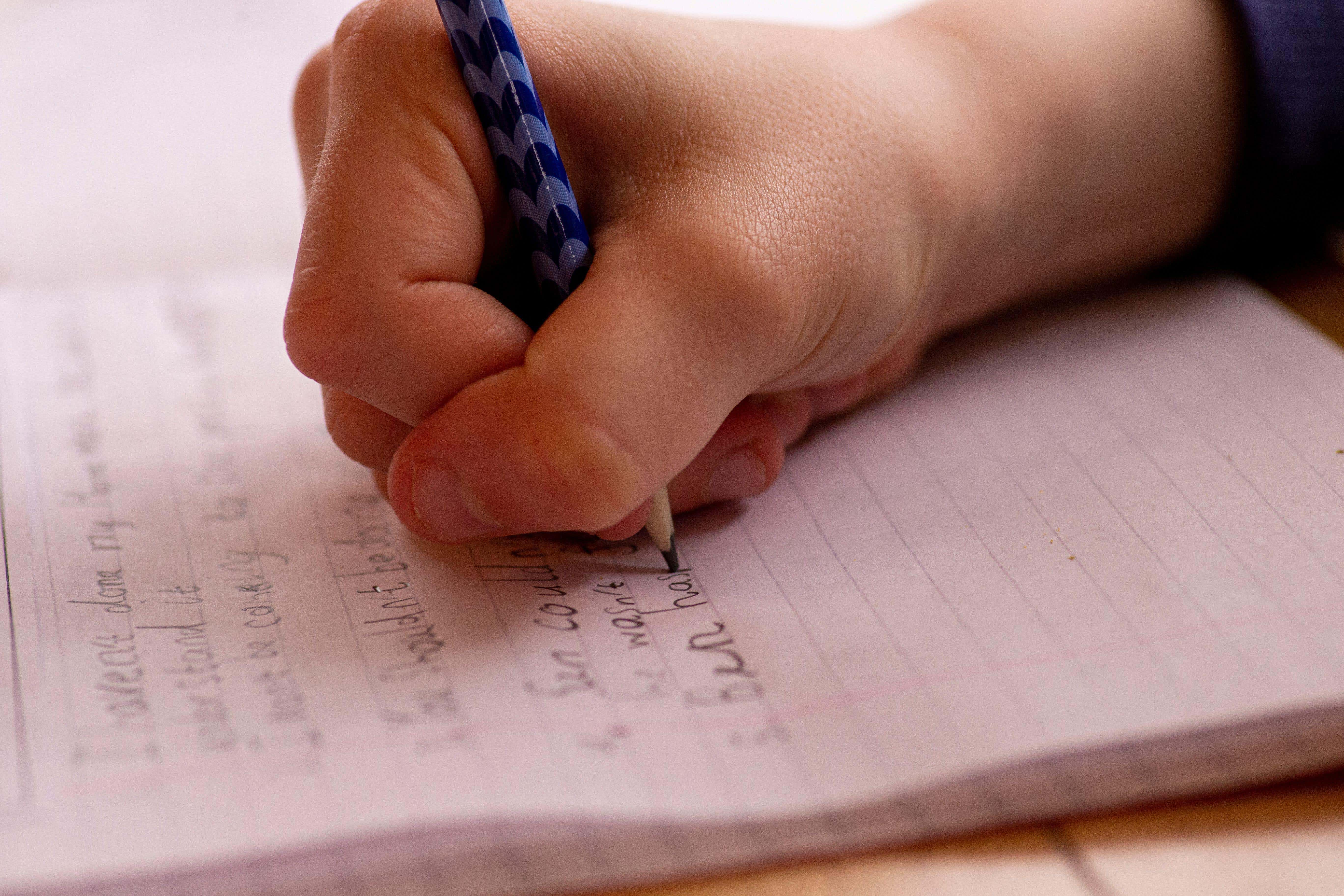
It’s a milestone that leaves parents beaming with pride: the first time their child shakily writes out their own name. And it’s the start of many more key childhood moments, from Christmas lists to writing their own stories.
If you’re keen to help your child learn to write, you might think about asking them to try to copy shapes, or trace over the dotted outline of a letter. But there’s a lot more that goes into writing. It requires fine motor skills using the hands – and this can be practised through threading beads, rolling playdough and stacking blocks.
However, while fine motor skills play a central role in getting children ready to write, it doesn’t end there. Handwriting is a complex developmental process, and preparation for handwriting also involves the development of key gross motor skills, as well as visual-perceptual skills.
I’m a researcher who works on how children learn to write. Below are five ways to help your child to prepare for handwriting that you might not have considered.
Take them to the playground
It might not seem that obvious, but a trip to the playground is perfect preparation for handwriting. All that open space and climbing equipment provide ample opportunities for young children to develop their gross motor skills.
Gross motor skills involve the body’s large muscles and are needed for balance and stability as well as posture and coordination. Think monkey bars – a fantastic and fun way to develop shoulder stability which allows for greater control of the small motor movements of the hands and fingers.

Another important element of gross motor skills is what’s known as crossing the midline. The midline is an imaginary line that runs down the centre of a child’s body. It plays a central role when developing hand dominance as children learn to reach across their bodies to write. Can your child hang from the monkey bars with their hands crossed? That’s great practice in crossing the midline.
And all that open space, interspersed with bulky and busy playground equipment, provides the ideal opportunity for children to develop spatial awareness as they duck and dive, swerving to avoid oncoming obstacles. Spatial awareness plays a key role in letter formation, placement and size, as well as spacing and page alignment.
Lots of blank space
Through early mark making and scribbling, children explore a range of movements and shapes. This early stage of mark making is essential in laying the foundations for handwriting development as the child develops a growing awareness of space and their place within it.
Look for large blank spaces in and outside of your home that children can use for mark making and drawing. Forget colouring books, and instead think large sticks of chalk on big open pavements, rolls of paper across open floor space, or large sheets of blank paper on an easel.
Teach them how to look carefully
Think about asking a young child to copy a shape, or a letter using their pencil. “Just copy the shape” – it’s simple, isn’t it?
The problem is, it’s not simple. At all.
It begins with visual perception – the process whereby the brain extracts and organises information, giving meaning to what we see. This makes a collection of lines into a square, for instance. Visual-motor integration is the ability to be able to coordinate fine motor skills and visual-perceptual skills to produce that letter, shape or number in a legible manner.
The visual component enables children to discriminate between letter shapes to recognise each letter’s specific characteristics, and to identify their orientation.

The motor element allows the child to carry out the necessary sequence of movements to form the letter.
By exposing young children to lots of opportunities to develop their visual-perceptual skills, you can help to prepare them for handwriting. Think richly illustrated picture books, jigsaw puzzles and Where’s Wally books – these help children sort out the meaning in marks and shapes. Picking out shapes, numbers and letters on the street as you walk to the shop together is a good opportunity, too.
Shapes before letters
It might be tempting to pick up a colourful ABC practice book with a neat “wipe clean” whiteboard feature to help your child learn to write. But hold off putting it in your shopping basket for now. Before children are ready to write letters formally, they should first be able to copy nine geometric shapes.
The ability to copy geometric forms is recognised in research as an indication of writing readiness in a young child. Formal handwriting training should be delayed until a child can successfully copy a vertical line, a horizontal line, a cross, a circle, a right oblique line, a square, a left oblique line, an oblique cross and a triangle.
Ditch the broken crayons
There are few things more frustrating for a young child than fading markers, blunt colouring pencils or a box of broken and bruised crayons. My research has found that the quality of writing materials matters when it comes to motivating the reluctant writer to give it a go.
Providing children with a variety of novel and fun writing materials leads to increased motivation and enjoyment of writing. These could be brightly coloured felt pens, gel pens, highlighters, magic markers and even scented markers and pencils, and don’t forget the finger paints. The messier the better.
Sinéad McCauley Lambe is an Assistant Professor in the School of Inclusive and Special Education at Dublin City University. This article is republished from The Conversation under a Creative Commons license. Read the original article.
Olivia Munn gets candid about the moment she had a ‘real big breakdown’ as a parent
Kelly Clarkson has a bone to pick with her kids’ school system
Drew Barrymore makes emotional confession about her family dynamic
My life feels like a mess – yes, it’s Mercury retrograde to blame
The truth about cholesterol – and how it affects your health







